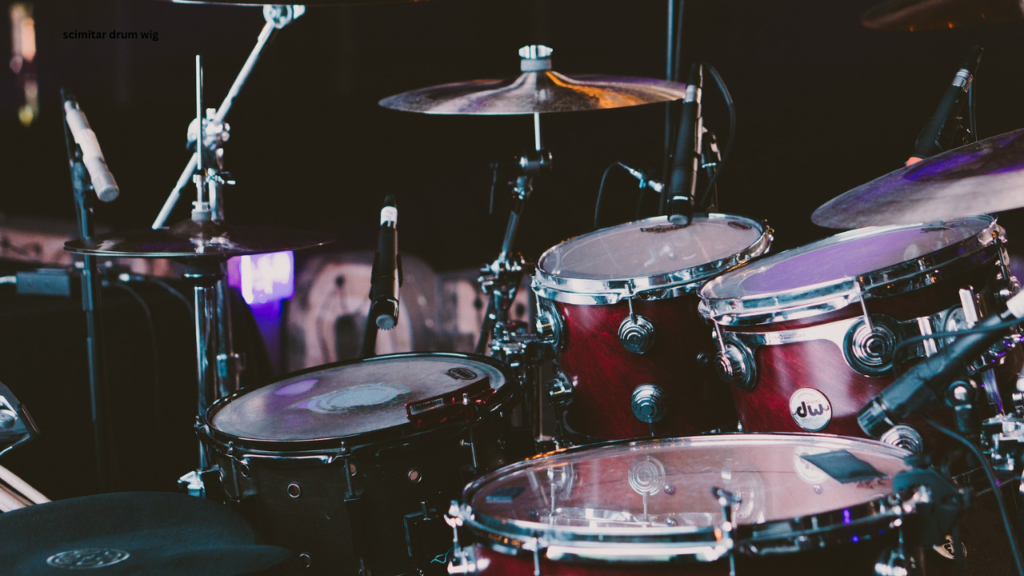At first glance, the phrase “Scimitar Drum Wig” may seem like an unusual combination of words, but delving deeper into each element reveals a blend of rich cultural heritage, artistry, and entertainment. To understand the broader significance, we need to explore the historical and cultural contexts of the Scimitar Drum Wig, and then consider how these elements might be fused together into something entirely unique within the realm of creative expression and performance art.
The Scimitar: A Blade with Rich History
The first element of the Scimitar Drum is the scimitar, a weapon with a distinct curved blade that has deep historical roots in the Middle East and Central Asia. Known for its elegant design and association with ancient warriors, the scimitar was widely used by cavalry for its cutting power. Its curved shape was ideal for delivering swift, slicing blows, making it a formidable weapon.
Today, the scimitar is not just a symbol of war but of nobility and grace. The inclusion of the scimitar in the Drum Wig evokes strength and beauty, providing a historical backbone to this imaginative fusion of culture, music, and fashion.
The Drum: The Heartbeat of Culture
The drum is the second key component of the Scimitar Drum Wig. As one of the oldest musical instruments, drums have been central to human culture for thousands of years. Drums are used in ceremonies, rituals, and celebrations, and they create a rhythm that connects people and communicates emotion. From African drums to Asian percussion, the drum’s cultural importance is vast.
The presence of the drum in the Scimitar represents rhythm and unity, symbolizing the pulse of life that connects all forms of artistic expression. It brings a dynamic, auditory element to the concept, suggesting a powerful connection between sound and movement.
The Wig: A Symbol of Transformation and Art
The final element of the Scimitar Drum is the wig, which has been a symbol of status, fashion, and transformation throughout history. Wigs have been worn for centuries, from the courts of Europe to modern theater. They allow wearers to alter their appearance and express their creativity.
In the context of the Scimitar Drum Wig, the wig serves as a transformative tool that blends the martial symbolism of the scimitar with the rhythmic energy of the drum. It could be an intricate, sculptural piece that visually unites these elements, making it a striking centerpiece in entertainment or performance art.

The Fusion of Scimitar Drum Wig
Bringing together the scimitar, drum, and wig creates the concept of the Scimitar Drum Wig, a fusion that can be interpreted in various ways. Whether through fashion, performance art, or cultural symbolism, it opens up a world of creative possibilities.
1. Performance Art with the Scimitar Drum Wig
One of the most natural expressions of the Scimitar Drum is in performance art. Imagine a dancer wielding a scimitar in time to a powerful drumbeat while wearing a wig that mirrors the elegance and flow of the sword’s blade. The rhythm of the drum would guide the movement, creating a harmonious dance between sound and motion. The Scimitar Drum would serve as both a visual and auditory spectacle, symbolizing the connection between power, rhythm, and transformation.
2. Music Inspired by the Scimitar Drum Wig
Another way to explore the Scimitar Drum Wig is through music. The drum’s role in this fusion suggests a rhythmic foundation, while the scimitar adds a sense of sharpness and precision. Imagine a musical performance where drummers play in sync with sword movements, creating a rhythmic choreography that tells a story of conflict, grace, and unity. The Scimitar Drum Wig could become a metaphor for the merging of different musical traditions, where rhythm and movement blend into one cohesive performance.
3. Avant-Garde Fashion
In the fashion world, the Scimitar Drum Wig could inspire high-concept designs that push the boundaries of creativity. A wig that draws inspiration from both the curved elegance of the scimitar and the percussive power of the drum would be a bold fashion statement. This artistic wig could be worn as part of avant-garde fashion shows or theatrical productions, representing the fusion of different cultural elements.
A designer might craft the Scimitar Drum Wig using sculpted materials that mimic the curves and sharpness of the scimitar, while incorporating textures or patterns reminiscent of drum skins or percussion instruments. This fusion would be visually stunning, making the Scimitar Drum a centerpiece in creative and entertainment industries.
The Symbolism of the Scimitar Drum Wig
At its core, the Scimitar Drum Wig symbolizes the blending of different forms of art and culture. The scimitar represents precision, history, and strength, while the drum embodies rhythm, unity, and expression. The wig, as a symbol of transformation, ties these elements together, allowing for endless interpretations in performance, music, or fashion.
In entertainment, It could be used to tell stories that transcend cultural boundaries, where rhythm meets elegance, and history meets innovation. Whether it’s used in a live performance or as a fashion statement, the Scimitar Drum Wig has the potential to inspire creativity and captivate audiences.
Conclusion
The Scimitar Drum Wig is a fascinating concept that merges the historical significance of the scimitar, the cultural importance of the drum, and the transformative power of the wig. By blending these three elements, It opens up new avenues for artistic expression, particularly in the fields of entertainment, performance art, and fashion.
From choreographed dances that synchronize swordplay with drumbeats to high-fashion wigs that symbolize cultural fusion, the Scimitar Drum Wig embodies the harmony between strength and rhythm. Its versatility allows for a range of creative interpretations, making it a unique and powerful symbol in modern art and entertainment.


